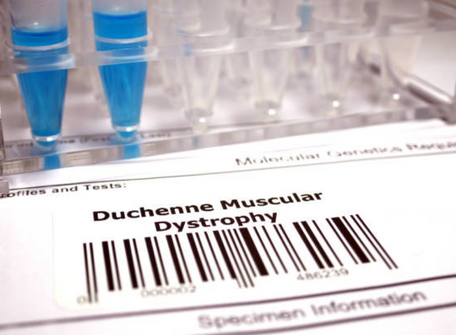Did you know?
Every 1 out of 5000 males born worldwide is affected by Duchenne muscular dystrophy (lethal pediatric muscle disorder).
This muscle disorder leads to progressive muscle wasting, and most individuals die by age 30 because of cardiorespiratory failure resulting from weakened heart muscles.
This article will discuss Duchenne muscular dystrophy, its symptoms, causes, and possible therapies to treat this condition.
What is Duchenne Muscular Dystrophy (DMD)?
Duchenne muscular dystrophy refers to the condition causing weakness of the heart and skeletal muscles that gets worsened over time. DMD is one of the common types of muscular dystrophy – a disease that makes muscles weaker and less flexible.
DMD is caused by mutations in the gene responsible for controlling and keeping our muscles healthy. This disease is commonly found among boys.
Symptoms of Duchenne Muscular Dystrophy
The symptoms of DMD begin in children by the age of 6 years. Children suffering from Duchenne muscular dystrophy have trouble walking, standing up, and climbing stairs. In the later years of their lives, patients may even need wheelchairs to move around. Besides, lung and heart problems are common among those individuals.
- Progressive atrophy (loss of muscle bulk) and muscle weakness in the legs and pelvis region of children
- Calf muscle hypertrophy (increases muscle size)
- Frequent falls
- Toe walking
- Waddling gait
- Fatigue
Some of the other common symptoms of Duchenne muscular dystrophy include:
- Cardiomyopathy
- Delayed speech and language development
- Shortness of breath
- Cognitive impairment
- Developmental delay
- Short stature
- Scoliosis (spine curvature)
Therapies to Treat Duchenne Muscular Dystrophy
There is no permanent cure for DMD. However, several therapies can help manage children’s symptoms and protect their muscles while keeping their lungs and hearts healthy.
Physical Therapy/ Physiotherapy
This therapy involves various stretching exercises to help prevent contractures (permanent tightening of tendons, muscles, and skin). Moreover, physiotherapists monitor the posture of children lying, sitting, and standing and advise the carer and parents of the children on the need for orthoses (mobility aids and equipment like canes, braces, and wheelchairs to improve mobility).
Breathing Assistance
As respiratory muscles become weak in DMD, a sleep apnea device is recommended that help increase oxygen delivery throughout the night. Children with severe muscular dystrophy may need a ventilator to force air in and out of the lungs. Assisted ventilation and Tracheostomy for respiratory failure are other supportive therapies to treat DMD.
Exercises
Pediatric therapy also involves gentle and low-impact aerobic exercises in their treatment plans for children with DMD to reduce muscle atrophy resulting from decreased muscle movement. Usually, these exercises include a combination of recreation-based and swimming pool activities.
Since Duchenne muscular dystrophy is an inherited health condition with no cure available, all you can do is prevent its symptoms and complication. Make sure you get your child the best medical care and therapies to improve the quality of their life.


